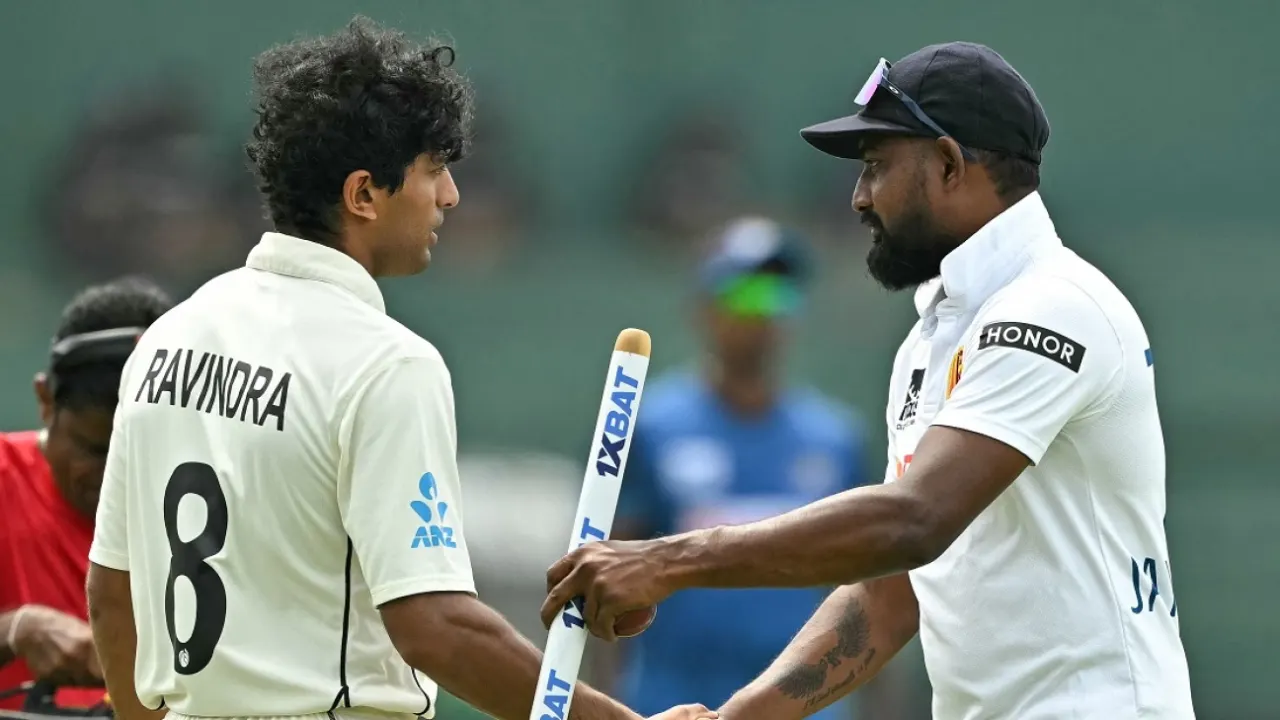Sri Lanka and New Zealand aim to capitalize on Galle conditions and avoid another collapse
Winning the toss and choosing to bat first in a Test match in Galle is not just a strategy, it's a tried and true tradition. It's not about trying to take advantage of favorable batting conditions, but rather about avoiding the treacherous ones.

In the first Test, Sri Lanka won the toss and obviously batted, but while the notable turn on day one signified a raging turner from the outset, Sri Lanka still managed to run up 305 in the first innings - even accounting for them losing their last four wickets for just 24 runs.
And after that, it was in fact New Zealand's batters that got to utilise the most batter friendly of conditions across the Test - on day two, when the turn had slowed down and Sri Lanka's spinners struggled for control. But their innings, too, was hampered by a late collapse, going from a pretty strong 269 for 5 to 340 all out.
Related
Sri Lanka look to ride on hot streak to stay in the fray for WTC final
Sri Lanka call up uncapped offspinner Nishan Peiris for second New Zealand Test
Southee pleased with young guns O'Rourke and Ravindra despite defeat
Dhananjaya de Silva's Sri Lanka deliver in contrasting conditions to inch up WTC table
But as the Test wore on, particularly on the fourth and fifth day, batting became the chore Galle is more commonly renowned for, with 14 wickets falling on day four and two wickets within 15 minutes on day five to wrap up the game.
"The pitch can change quite quickly and we saw that," New Zealand head coach Gary Stead noted on the eve of the second Test. "From being relatively good off the straight areas, to then spinning, quite a bit on that fourth day. The conditions can change very quickly.
"So I think every run you get in the first innings is very important. And making sure you can post a as large a total as possible, as that means it's just less runs you have to score in the second innings."
Stead's sentiment was something shared by Sri Lanka batting coach Thilina Kandamby, who spoke towards the importance of setting the tone early on, be it with the bat or ball.
"Setting the tone is key in Test cricket, even with the ball. In Manchester also, if you remember, we had a really bad day starting with the bowling. Then we recovered really well. That's the positive part of it, whether it comes to bowling or batting our recovery is really good. But setting the tone is really important, and all the players know that."
Both teams are also acutely aware of the areas in which they need to improve, primarily in pressing home hard-fought advantages. With five wickets in hand, 50 runs adrift of Sri Lanka's first innings total, and a set pair of Daryl Mitchell and Glenn Phillips at the crease at the start of day three, New Zealand might have been eyeing a hefty first-innings lead - particularly taking into account the confidence with which they had approached their batting the previous day.
As it turned out, they would lose their remaining five wickets for 86 runs on the third morning, and in the process relinquish the grip they had on the game. With 63 runs the final margin of defeat it's pivotal passages such as these, that Stead knows proved the difference in the end.
"I actually think we had a really good Test match and for the most part it was very evenly contested. I thought that it was just some small moments that we could have done better," he explained. "We probably should have got more run in terms of that first innings, and the lead from the position we were in.
"And then the second session, I think it was of the third day, where we didn't take a wicket. [Dinesh] Chandimal and [Dimuth] Karunaratne batted very well, but we maybe were just a little bit slow to adjust and adapt to that situation."
"We probably should have got more run in terms of that first innings, and the lead from the position we were in" - Stead
•
AFP/Getty Images
Kandamby had similar grievances with his own side. Sri Lanka lost five of their top six batters (including Angelo Mathews who retired hurt) inside the first 35 overs of day one, before a century from Kamindu Mendis and a Kusal Mendis fifty revived their innings. In the second innings, having got to 153 for the loss of just one wicket, Sri Lanka stumbled to 178 for 4. And then again went from 286 for 6 to 309 all out.
"Mindset will be the same [going into the game], but we have discussed where we went wrong, especially in the batting," revealed Kandamby. "We had a collapse in the third or fourth day, it had happened a couple of times earlier also. The senior players need to take the responsibility because they have played a lot of cricket in Galle. We all knew the wicket would be helpful for spinners.
"When we see the stats, I think they swept more than us, which is a concern. We played some good sweep shots as well, but you can't always trust the defence on a wicket like this. So you're better always to be in a positive mindset to score runs."
One other area of concern has been the contribution from Sri Lanka's tail. In terms of batting contributions from those batting at 9, 10 and 11, Sri Lanka know they could be doing better. Across both innings they contributed a total of 13 runs, while Ramesh Mendis batting at eight offered not much more.
This has partly been reason for Sri Lanka bringing in Milan Rathnayake - following his impressive showing with the bat in England - in place of Lahiru Kumara, but Kandamby said it was nevertheless an area they were actively looking at improving on.
"Yes we're looking for runs from them [the tail], but more than that it's about supporting the batter at the other end. It's only after the recognised batter gets out that we start thinking about how to put the pressure back on the bowlers and get some runs. So honestly if they can get about 30-40 runs, that would be good. Because if you look at it compared the rest of the Test playing nations, our batters at 9, 10, 11, are quite low down.
"Whenever we have practice, batting is compulsory for them. And when we're not playing in a series, they will work the coaches at the HPC (high performance centre) to work on their technical errors."
RELATED STORIES






LATEST NEWS







